DAM vs. MAM | How to Shop Media Asset Management Software
“Media asset management” (MAM) and “digital asset management” (DAM) are very similar, but they have notable differences which make them best for different users. That said, certain DAMs have strong video management functionality which make them a good choice for users who could make good use of other DAM features, too.
In this post, we explain:
- The differences between media asset management software and digital asset management software
- How to choose between the two and narrow down your options
- Brandfolder’s media asset management features for video and multimedia files
At the end, we’ll also include a few other media asset management software to consider.
Want to tour Brandfolder’s media asset management features and see our advanced tools for video and multimedia assets? Request a free demo with our team to discuss your exact needs and learn how we can tailor our DAM platform for you.
What Exactly Is Media Asset Management Software?
The term “media asset management” refers to the processes and software your teams use to manage video recordings, audio files, and other multimedia assets.
Media asset management (MAM) software is typically used by video editors or producers, or those who work in the broadcast industry, but it’s a good choice for anybody who needs to manage a high volume of rich media assets because it has advanced features to support video, audio, and multimedia production.
MAMs are different from digital asset management solutions because they’re geared more for teams who just have video and rich media to manage, whereas DAMs are for teams that have videos and other types of assets. DAMs can be used by a variety of teams across all industries; they accept all file types and aren’t limited to video and rich media files; they have advanced features to support all types of brand collateral and the teams who need to use it.
Some DAM software has extra video editing and publishing features to give users who have a lot of video assets the tools to better repurpose and utilize them. So if you’re looking for a digital asset management software that supports video, you should look for a brand that offers these bells and whistles. Plus, most DAMs can be integrated with other video production software to support the entire content creation workflow.
How to Choose Between Media Asset Management & Digital Asset Management Software
So how do you choose between the two? It’s actually pretty easy.
You’re best suited for media asset management software if….
- You work in video production or are looking for a tool specifically to support video production.
- You work in the broadcast industry and need a tool to assist with media planning.
Use a digital asset management system if….
- You have numerous asset types to manage, in addition to video, audio, and multimedia files.
- You have a high volume of video files and multimedia assets to manage, but don't need production workflow support
- You work outside of video production — for example, in sales or marketing teams, advertising or PR, eComm or retail, photography, education, hospitality, the list goes on...
- You want software that works for all of the different teams and end-users that use your brand assets.
Check out our guide of the best digital asset management software to learn more about the most popular DAM options.
Brandfolder’s Media Asset Management Features
Brandfolder is consistently ranked one of the best DAM software because it’s highly versatile and built with dozens of extra features — such as an advanced video studio, for example — to support a variety of teams and what they need to accomplish.
Our DAM lets you store all of your brand collateral in one place, instead of using multiple different storage options. As such, it prevents assets from being spread around and is perfect for users that need to store all of their files (i.e., documents, images, videos, 3D models, etc.) in one central location.
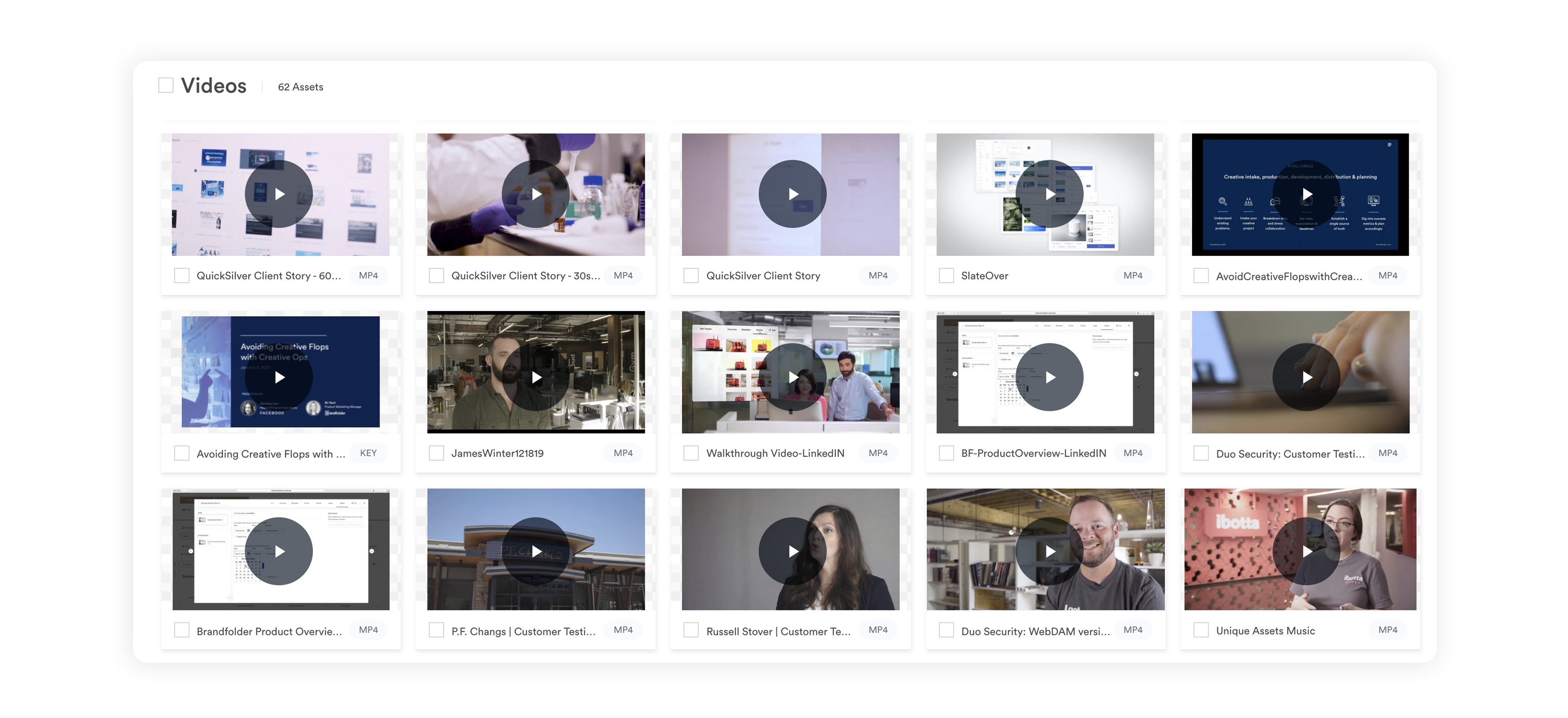
What’s even more convenient is that Brandfolder is easily customizable: We sit down with you before even switching over to our DAM to discuss what you need in a digital storage solution and determine how we can set up Brandfolder to check those boxes. Brandfolder also integrates with numerous other applications and has an open-source API, so you can connect it with any other software your teams use, including video editing and video production tools, and push assets between platforms with ease.
Let’s talk a bit more about Brandfolder’s video features and how it’s designed to help you manage your entire asset library.
Clean & Current Asset Library
In addition to storing all of your brand assets, Brandfolder makes it a lot easier to keep your asset library organized and up-to-date with permissions, duplicate asset detection, and expirations.
After you’ve moved all of your videos and other digital content to Brandfolder, you can put a review and approvals process in place for all new assets. You can even control who is allowed to review and approve assets so tasks aren’t only delegated to one individual admin, but rather dispersed throughout multiple admins on your team. This prevents unauthorized users from adding content to your media library and ensures everything that lives in your DAM has been given the green light to use.
Brandfolder’s duplicate asset detection also comes into play when uploading assets: This feature analyzes what you’re uploading to see if the same file already exists in your DAM. If it does, Brandfolder will prompt you to cancel the upload or merge the new file with the existing one. This feature is beneficial because it prevents teams from having multiple versions of assets lying around, but it’s especially useful for teams with a lot of video footage because video files eat up a good deal of storage space, and eliminating dupes ensures you’re not wasting space.
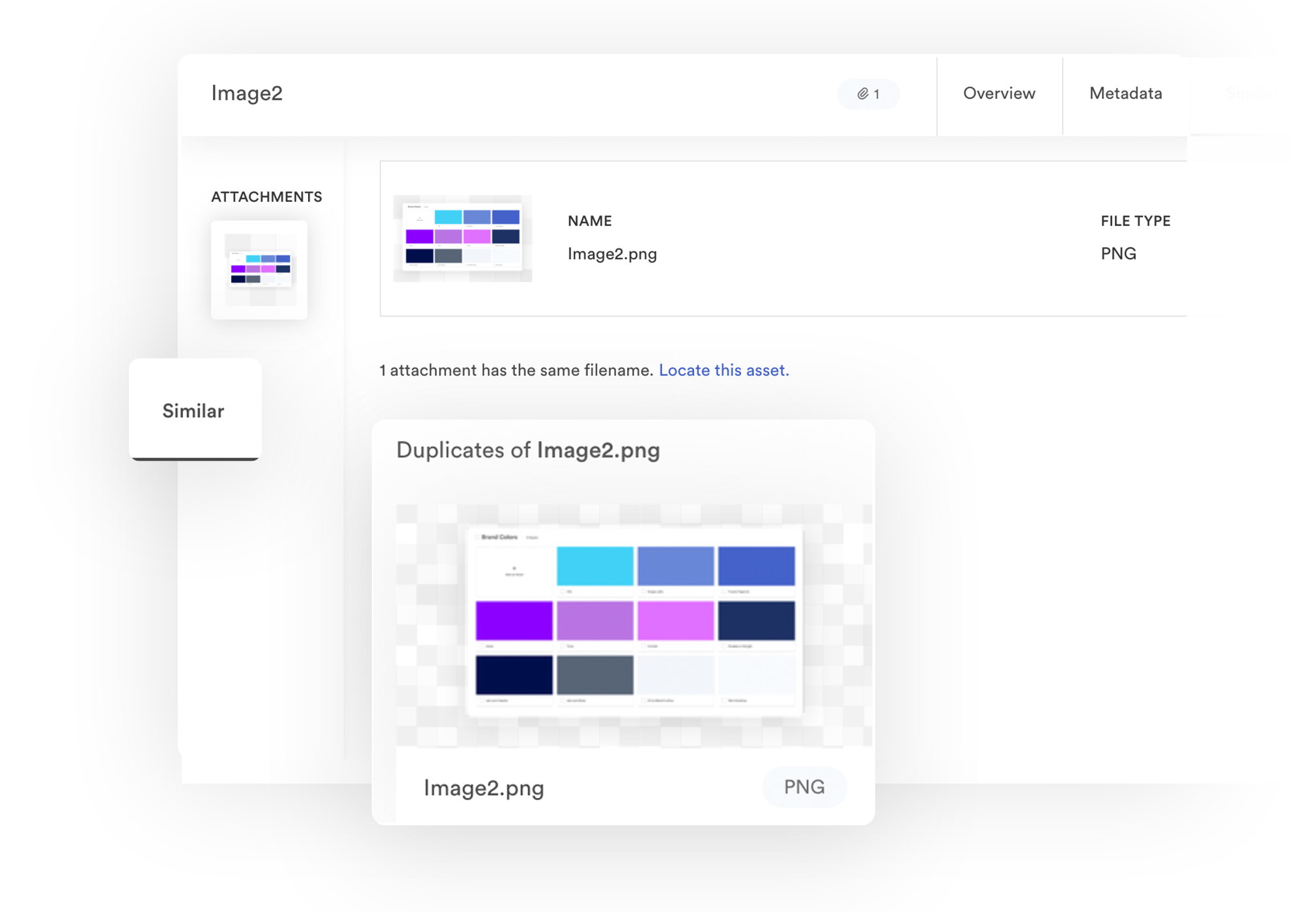
You can also take advantage of expirations to “retire” content when it’s no longer needed. If you’re using video footage for a limited-time campaign, such as a holiday commercial or a promo video, you can choose a date to expire the content in Brandfolder, and then users cannot download or use it after that given date. This gives you better control over the content lifecycle, from ingestion to expiration.
Don’t worry — the content will still live in Brandfolder in case you ever want to access it in the future, it’ll just be labeled as “expired.”
Trackable Sharing Methods
Email has never been ideal for sharing digital content because it’s hard to keep track of what’s been sent and when, and you have virtually no control over content once you hit send. Not to mention, sending videos over email is even more of a headache given how large video files can be — we’ve even heard of teams having to send video files in thumb drives via snail mail because they had too much footage to send online.
So to make life easier, we provide two easy ways to share digital assets in Brandfolder: You can add other Brandfolder users to content via permissions, or you can send assets to external collaborators with a custom share link.
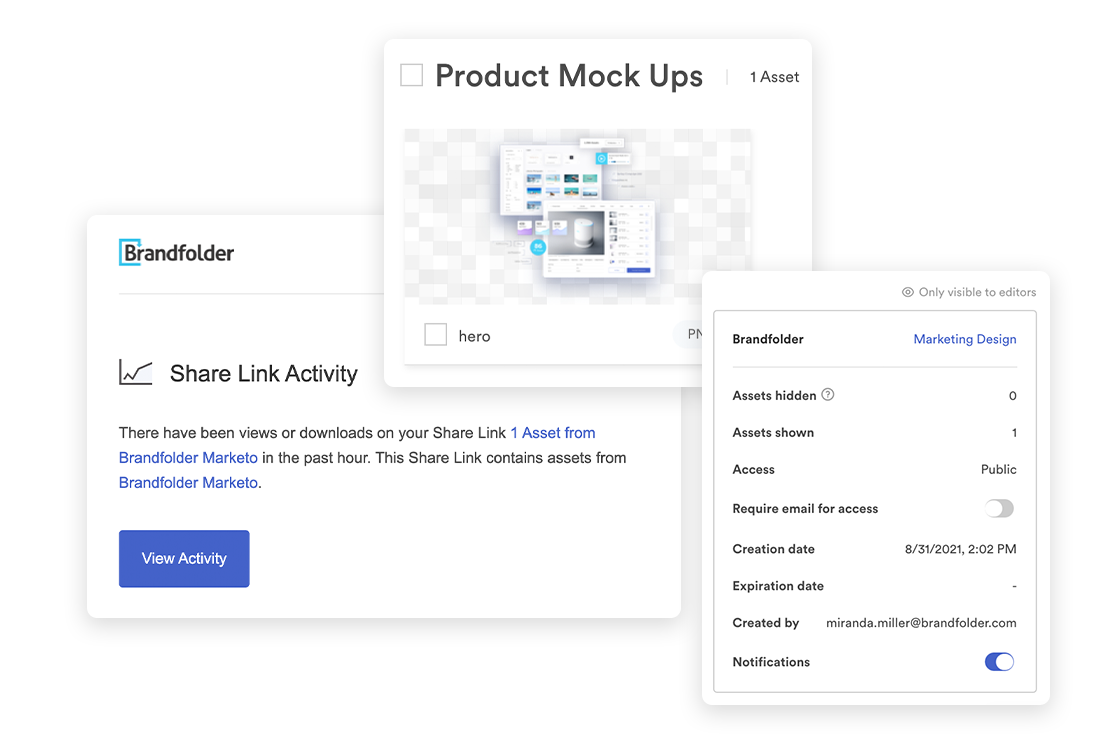
We also give you better control over sharing — you can modify permissions or custom share links at any time, and all of our custom share links are trackable so you always know what content has been shared. When sharing digital media via a share link, you can add or remove content, watermark content or disable downloading for end-users, set up real-time notifications for when users open or download content, set links to expire, and more.
These sharing methods not only make the act of sharing assets easier, but they also improve the accessibility of assets so other users can log in to Brandfolder and find approved collateral on their own terms… without having to send an asset request every time they need a piece of content. This allows everybody — from the video editors who produce the content to the teams who use it — to work more productively.
Collaborative Workflow Features & Version Control
Brandfolder’s collaborative features streamline video (or other asset) updates by allowing teams to:
- Comment with each other about edits on the actual asset, and reference that comment thread anytime they need.
- Push the video file back and forth between Brandfolder and its native editing app to quickly make changes.
- Review edits in Brandfolder and approve the updated video for use.
- Keep a detailed version history outlining the edits made and who made them.
- Automate asset updates and guarantee everybody’s working off the most recent version.
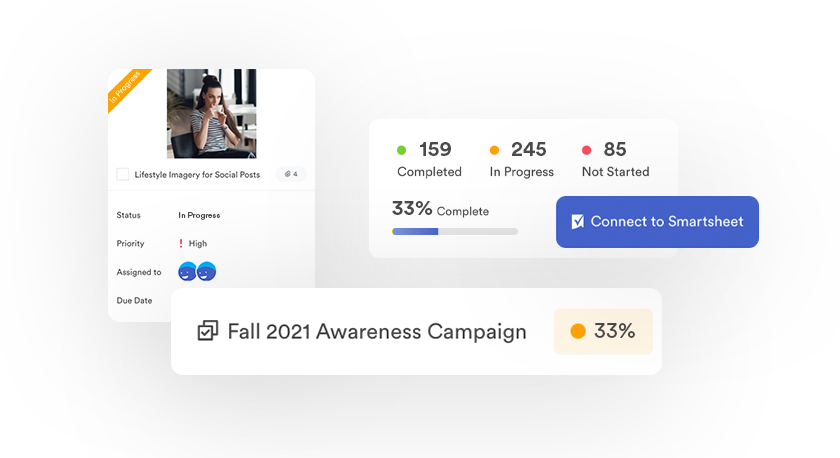
Brandfolder integrates with a variety of content creation tools, including Adobe’s Creative Cloud and other video production software, so you can push new content directly from these platforms to Brandfolder. Our integrations help users to avoid the cumbersome process of downloading and re-uploading videos between platforms so they can enjoy a smoother editing process.
Our collaborative features and integrations improve team communication, version control, and ensure all users are staying in the same place to work on assets.
In addition, Brandfolder now features a built-in project management suite, called Workspace, where teams can work on digital projects in one shared dashboard. Workspace looks and feels a lot like the typical project management software: It lets you break down big projects into smaller tasks, assign tasks to other team members, check on task status, prioritize tasks based on importance or due date, look back on completed tasks, and more.
Our DAM system also integrates with Smartsheet for more advanced project management capabilities.
Read More: Learn about our digital asset management tools for creatives and design teams.
Advanced Video Studio
On top of collaborative tools for creatives and video editors, our Advanced Video features empower everybody — even users with absolutely zero video editing knowledge — to repurpose video files for their individual projects. This way, they don’t have to ask a designer or other team member with video editing experience to assist with their tasks, and everybody has the resources to utilize your brand’s video content.
In the Advanced Video suite, you can:
- Trim video files to cut out the moments you don’t want or need
- Create video clips or GIFs for social media or other online channels
- Convert video file formats (.mp4, .mov, .flv) or adjust the resolution (1080p, 720p, or 480p)
- Add branded watermarks to videos and adjust the watermark’s appearance
- Create video thumbnails and access an embeddable link so you can post your video across the web
- Review your video footage in our high-quality media player
Once you make changes, you can download the modified video and use it in your projects. Alternatively, you can pull video files into branded templates, push videos to other applications with integrations, or use Brandfolder to publish videos online.
Note: Brandfolder won’t permanently save any of these changes, so your original video file will always remain intact regardless of who’s using it. Your video files will only update if an admin or creative makes alterations in the Workflow tab and replaces the video file with a new version.
Another cool perk of storing videos in Brandfolder: Our transcription feature. When you import your video footage, our software automatically transcribes the audio to text and stores the transcription in the asset’s metadata. That way, you can use the search functionality to locate videos by dialogue, review video content without having to playback the video, and pull the transcript for captions, subtitles, video analysis, and other video editing projects.
Brandguide
To give designers and video editors better peace of mind, Brandfolder also lets you create and store detailed brand guidelines within the platform. This ensures that everybody who can access your video files knows exactly how they can use them.
With our Brandguide feature, you can copy brand guidelines from another document if you already have some written up, or you can draft new guidelines in Brandfolder. The set-up prompts walk you through the entire process.
There’s no right or wrong way to set up your brand guidelines — you can be as concise or detailed as you wish. But typically, we see teams who work with video content use the Brandguide feature to outline:
- The type of tone they want their branded videos to have
- Approved language for videos… including what not to say
- Approved music, sounds, graphics, etc. to use in videos
- Where videos can be posted
- How videos can be altered
- Specifications for downloading and publishing video files (i.e., preferred file type, resolution, etc.)
- The type of brand elements to include when posting videos online
- How to watermark videos and examples of approved watermarks
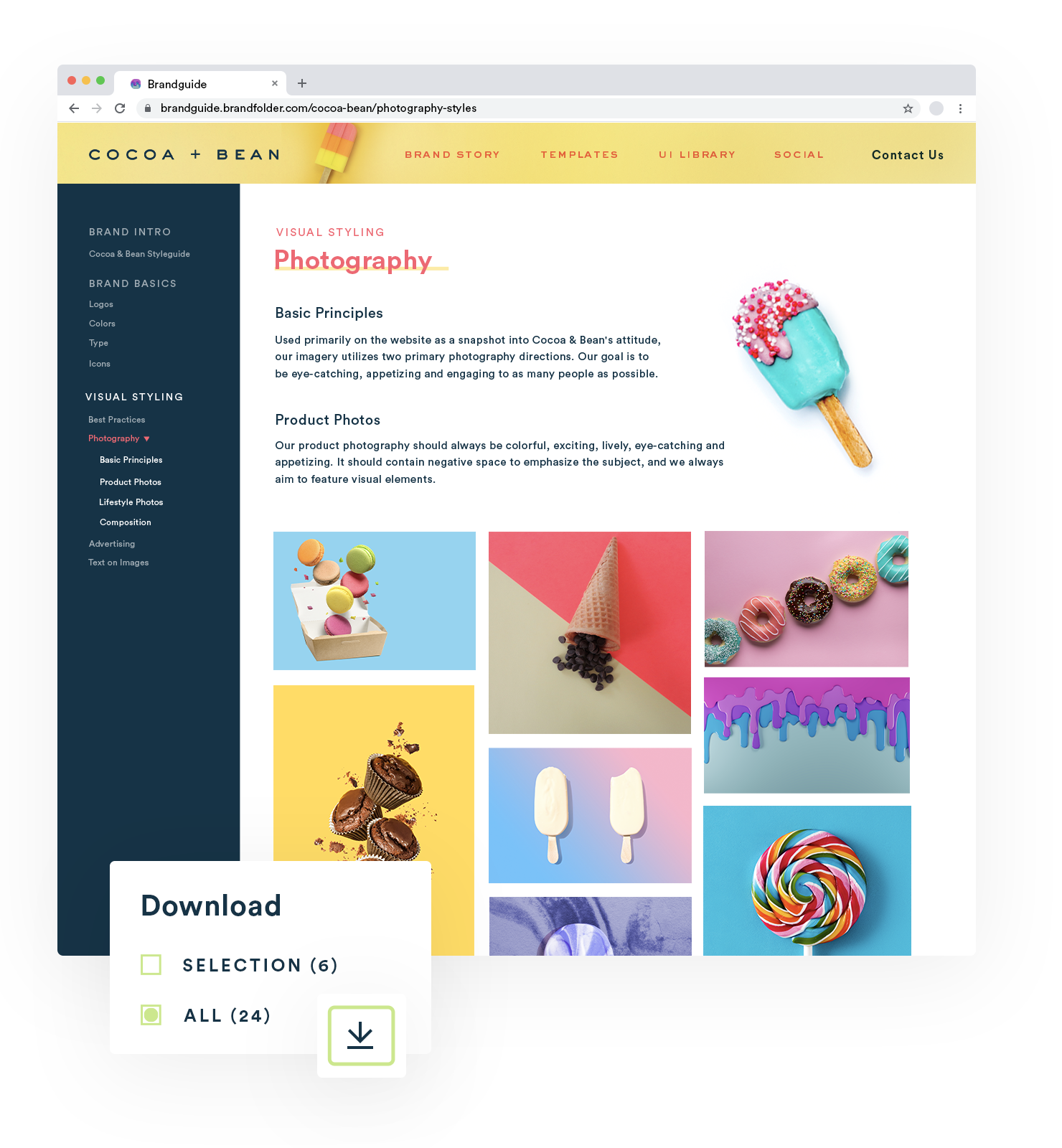
At the end, your brand guidelines are displayed in a polished, branded portal, and the page layout ensures that all of your information is easy to browse, improving the user experience.
Having accessible brand guidelines greatly improves brand consistency and reduces the number of questions creative teams and videos editors have to field about how to use collateral.
For more tips on brand management, follow our brand consistency checklist.
Copy & Paste Online Publishing
Brandfolder also has a built-in content delivery network (CDN) system so you can use Brandfolder as a single source of truth and power online content from your DAM.
So how does this work?
Each of your assets in Brandfolder, including all of your rich media files, is assigned a unique CDN link. You can access this link within the asset overview and then publish your content online by copying and pasting the link where you want your asset to live.
You can use CDN links in email marketing campaigns, eCommerce sites, and other web pages, content management systems, (or really anywhere on the web). This makes the process of publishing video files much faster because you can just link your video across websites instead of downloading the content and uploading it every place you want to publish it.

Using Brandfolder’s CDN system to publish online content is also beneficial because:
- Brandfolder tracks all CDN links so you know exactly where your content lives online.
- It eliminates the tedious task of swapping assets every time edits are made, as all changes made at the Brandfolder level automatically reflect everywhere the asset is embedded.
To read more about using digital asset management software to publish online content, check out our DAM for publishing post.
Customizable Reporting Features
You can also keep a closer eye on how and where your videos and other assets are used with Brandfolder Insights. With our reporting dashboard, you can look at:
- Which assets are viewed and downloaded most frequently (a.k.a. “Top Performers”)
- Who’s downloading and using your assets most often (a.k.a. “Top Users”)
- Who’s sharing assets, with whom, and how often
- And more
Plus, our reporting features are completely customizable, so you can track different data over different time periods.

Our reporting feature also gives you insight into the content you need to create since it shows everything your users are searching for in Brandfolder. You can see which search terms generate helpful results, and which ones leave users requesting more. Then you can plan accordingly and implement new video projects around their needs.
Does Brandfolder have the right media asset management features for your teams? Explore the ins and outs of our digital asset management system and decide if we’re truly the right DAM for your needs by getting started with a free demo and consultation.
Other Media Asset Management Software to Consider
If you need a more robust media asset management system to support video editing or production, consider the three options below:
VSNExplorer
An enterprise media asset management system, this uber-advanced solution has countless features to produce new video content, store and preserve video files, distribute video files to others, plan media stories, and schedule videos/multimedia for publishing. They also offer dozens of other software to support their MAM system.
This solution is popular because it covers everything you’d need (and more) for video production and media planning, but its interface is a little outdated, it’s somewhat tricky to use, and it has an expensive price tag.
eMAM
eMAM, or Empress Media Asset Management, is a somewhat more basic media asset management system that has a number of tools to produce new content, collaborate with other team members on video projects, and store videos in one accessible repository.
eMAM offers a variety of MAM solutions for different team sizes, but their platform is unique because they offer those solutions in both cloud-based and on-premise options — so this is a viable option for users who need self-hosted software.
eMAM has a lower price point than other media asset management platforms, but reviewers say the platform is always “under construction” so it’s hard to keep up with new features and requires ongoing training.
MediaCentral
MediaCentral is sometimes categorized as a digital asset management platform, but at its core, it’s a media workflow solution for teams who need to focus on video and multimedia production. It’s popular amongst remote teams and users who work with collaborators from all over the world because it’s built to unify teams, aid communication, and boost efficiency.
MediaCentral’s MAM is pretty customizable, you can pick the features you need and set up the integrations that best suit your teams and workflows. Their solution is advertised for teams across almost all industries and verticals, and their onboarding team can help get you set up.
The only thing is that MediaCentral’s software can be pricey: You have to opt into a subscription, and most of the features are tacked on as extras, so you’re constantly being upsold when you need to access a new feature or add a new user. In addition, MediaCentral gets so-so reviews, some reviewers enjoy the platform because it’s simple, but some say the software is difficult to learn and use.
Get Started With Brandfolder For Free
Finding the right online storage solution for your brand assets comes down to considering:
- Why you need a more advanced storage solution and the pains you’re currently facing
- Which type of software has the features and functionalities you need to resolve those problems
With just those two considerations, you can choose between MAM and DAM solutions, and narrow down your options from there. But if you’re still on the fence, we’re always here to help.
Our hands-on customer experience team is available to walk you through the Brandfolder platform and help you decide if our digital asset management tool is truly the best fit for your business. We’ll talk to you about your teams’ specific needs and how your different users can leverage Brandfolder to bolster their workflows. We’ll even gameplan the onboarding process with you so you’re never on your own to tackle this transition.
To learn more about Brandfolder’s features, customization, and pricing, click the button below.
